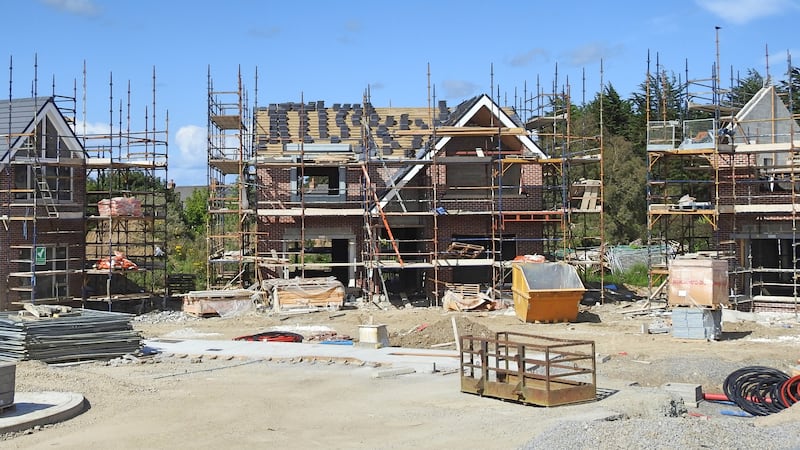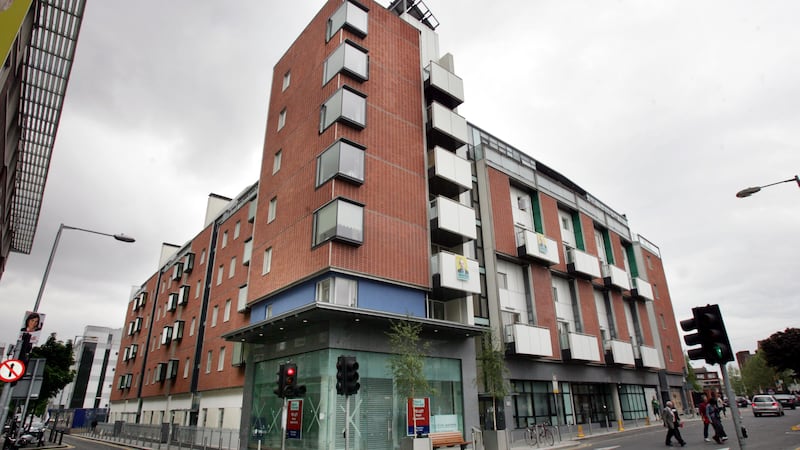Construction costs for houses and apartments are 15-30 per cent higher in Dublin than in comparable cities around Europe, according to a cost comparison study to be presented to Government on Thursday.
While labour costs are cited as a key factor, some of the lower costs are attributed to less stringent specifications in each of the four European cities which were compared with Dublin: Copenhagen in Denmark; Berlin in Germany; Utrecht in the Netherlands; and Birmingham in the UK.
The study, commissioned by the Department of Housing in partnership with bodies from the construction sector, was carried out during the course of last summer before the latest rise in building costs.
The report comes as the latest exchequer returns show capital spending at the Department of Housing was 32.5 per cent lower than planned for the first four months of 2023. Although €434 million had been earmarked for such spending until the end of April, just €293 million of this was spent – €141 million below profile.
RM Block
The Government has previously blamed building inflation and supply shortages as among the factors behind its capital underspend in housing.
The findings of the cost comparison study will be brought by Minister for Housing Darragh O’Brien to Thursday’s meeting of the Cabinet. The research was carried out by construction economics consultant Mitchell McDermott, who compared the costs of homes built to Irish specifications in those cities, and then examined the actual costs of constructing those homes using the specifications of those countries.
The study found construction costs to build the same scheme house in Birmingham – to Dublin specifications – were 15 per cent lower. However, with British specifications, the costs were as much as 29 per cent lower.
Lower labour costs in the UK, as well as less expensive market conditions there, contributed to the lower costs, according to the study. The scope of builds in the UK has also tended to be lower, with fewer en suite bathrooms or fitted wardrobes as standard, for example. House sizes also tend to be a bit smaller in Birmingham than in Dublin, the report found.
The costs of apartments worked out more or less the same for the five cities using Irish build specifications. However, because a lower standard of specifications and finish applied in some of the cities, it meant the construction costs for apartments in other cities were 30 per cent lower. The absence of a requirement to finish floors, kitchens or light fittings was cited as a factor behind the cost difference.
The study also found lower construction costs were evident in the four European locations for student accommodation but mainly due to differences in scope, unit sizing and specification.
Electrical, plumbing and heating costs were also higher in Dublin than the four other cities, the study found.
The aim of the study, which was carried out in July 2022, was to support the reduction in residential construction costs and increased standardisation. Construction costs account for about 50 per cent of delivery costs.
It is understood that no decision has been taken on foot of the study but one of the recommendations of the group, which oversaw the report, is that a standardised approach for housing design and construction could lead to cost reduction and opportunities.
Regarding the underspend on housing disclosed in the exchequer figures, a Department of Housing spokesman said: “It’s important to note that the figures referred to is the financial position against published profile and that expenditure is typically weighted towards the second half of the year.
“The department expects expenditure to return to profile throughout the year and allocation to be fully spent,” he said.
However, Sinn Féin’s housing spokesman, Eoin Ó Broin, said it was “concerning” that the level of underspending this year was increasing, noting that it had been 29 per cent by the end of March and was now more than 32 per cent.
He argued that Mr O’Brien was not focused on the “key problem” which he said was “far too much red tape, far too much bureaucracy strangling our local authorities and approved housing bodies, and slowing down the delivery of much needed social and affordable homes”.
He added that this was “ultimately pushing up the price because the more you delay, the more you’re impacted by construction cost inflation”.


















